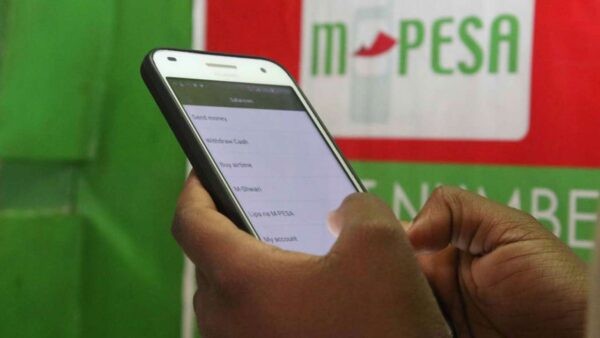World Bank: Mobile money fuels 114 per cent surge in financial inclusion in Kenya

Kenya has seen a 114 per cent rise in financial inclusion over the past decade, with account ownership among adults more than doubling since 2011.
Data by the World Bank shows the percentage of Kenyan adults with a financial account has soared from about 42 per cent in 2011 to 90 per cent in 2024.
The growth is largely attributed to the widespread adoption of mobile money platforms, which continue to reshape the country’s financial landscape.
“Mobile money contributed to the overall increase in account ownership in low and middle-income economies between 2014 and 2024, narrowing gaps in financial inclusion by embracing mobile money or other digitally enabled accounts,” the 2025 Findex report reads.
To quantify this, the lender says 40 per cent of adults in Sub-Saharan Africa had a mobile money account as of 2024, up from 27 per cent in 2021.
Notably, the mobile money services are not only expanding access, but also emerging as the leading source of formal credit in the country and the Sub-Saharan Africa region at large.
While the overall share of formal borrowing has remained relatively stable since 2021, the lender reveals a growing number of borrowers are now securing loans through mobile money accounts.
“Because overall levels of formal borrowing in Sub-Saharan Africa are low, borrowing from a mobile money provider constituted nearly 60 per cent of all formal borrowing in the region in 2024,” the lender says.
It adds that economies with some of the highest rates of mobile money account ownership in Sub-Saharan Africa also have the highest rates of people borrowing from their mobile money providers.
“In Kenya, the region’s pioneer in mobile money, 32 per cent of adults, or 86 per cent of formal borrowers, borrowed from their mobile money providers, including 25 per cent of adults who borrowed only in this way.”
The trend is mirrored in neighbouring Uganda, where formal borrowing levels are also holding steady, with more individuals turning to mobile money for credit.
Conversely, the report notes a decline in the share of adults borrowing exclusively from banks or similar financial institutions.
Nevertheless, it highlights a gender disparity in access to mobile money credit, with women significantly less likely to borrow through these platforms.
In Kenya, the gender gap stands at 16 percentage points, meaning women are 16 per cent less likely than men to access credit via mobile money services.
Data by the World Bank shows the percentage of Kenyan adults with a financial account has soared from about 42 per cent in 2011 to 90 per cent in 2024.
The growth is largely attributed to the widespread adoption of mobile money platforms, which continue to reshape the country’s financial landscape.
“Mobile money contributed to the overall increase in account ownership in low and middle-income economies between 2014 and 2024, narrowing gaps in financial inclusion by embracing mobile money or other digitally enabled accounts,” the 2025 Findex report reads.
To quantify this, the lender says 40 per cent of adults in Sub-Saharan Africa had a mobile money account as of 2024, up from 27 per cent in 2021.
Notably, the mobile money services are not only expanding access, but also emerging as the leading source of formal credit in the country and the Sub-Saharan Africa region at large.
While the overall share of formal borrowing has remained relatively stable since 2021, the lender reveals a growing number of borrowers are now securing loans through mobile money accounts.
“Because overall levels of formal borrowing in Sub-Saharan Africa are low, borrowing from a mobile money provider constituted nearly 60 per cent of all formal borrowing in the region in 2024,” the lender says.
It adds that economies with some of the highest rates of mobile money account ownership in Sub-Saharan Africa also have the highest rates of people borrowing from their mobile money providers.
“In Kenya, the region’s pioneer in mobile money, 32 per cent of adults, or 86 per cent of formal borrowers, borrowed from their mobile money providers, including 25 per cent of adults who borrowed only in this way.”
The trend is mirrored in neighbouring Uganda, where formal borrowing levels are also holding steady, with more individuals turning to mobile money for credit.
Conversely, the report notes a decline in the share of adults borrowing exclusively from banks or similar financial institutions.
Nevertheless, it highlights a gender disparity in access to mobile money credit, with women significantly less likely to borrow through these platforms.
In Kenya, the gender gap stands at 16 percentage points, meaning women are 16 per cent less likely than men to access credit via mobile money services.
World Bank
Kenyan adults
mobile money platforms
Let’s Connect
We’re here to listen, support, and engage with you.
Whether it’s feedback, a request, or collaboration — Hon. Yusuf Hassan’s team welcomes your message.
Office Address
Kamukunji Constituency Office, Nairobi
Call
+254 737 500200, +254 716 667733
“Leadership is not about position — it’s about purpose, people, and progress.”